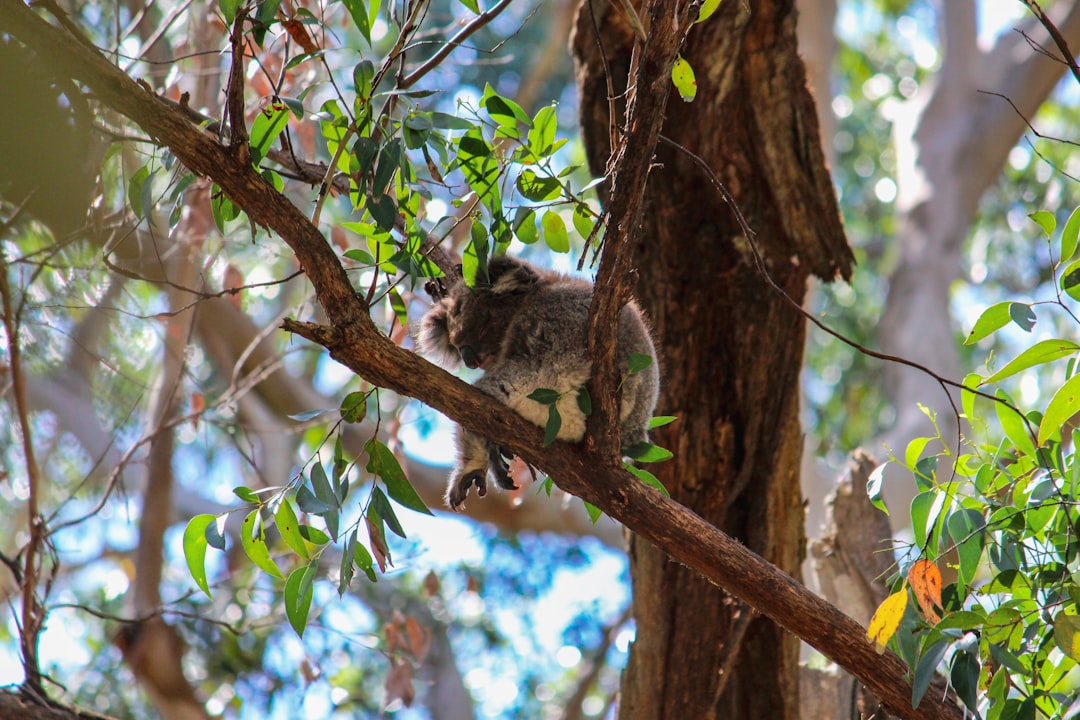When you think of iconic monsters in cinema, Godzilla undoubtedly comes to mind. However, lurking in the shadows of this colossal creature is a formidable counterpart: Mecha-Godzilla. This mechanical titan has captivated audiences since its debut, serving as both a fearsome adversary and a complex character in its own right.
As you delve into the world of Mecha-Godzilla, you’ll discover a rich tapestry of narratives that explore themes of technology, identity, and redemption. Mecha-Godzilla is not just a simple robot; it embodies humanity’s struggle with its own creations. As you explore its evolution, you’ll find that this character reflects our fears and aspirations regarding technology.
From its inception as a weapon of destruction to its transformation into a symbol of hope, Mecha-Godzilla’s journey is as multifaceted as the creature itself.
Key Takeaways
- Mecha-Godzilla is a popular character in the Godzilla franchise, known for its mechanical design and destructive capabilities.
- The original Mecha-Godzilla was created as a weapon of destruction by alien invaders to defeat Godzilla and conquer Earth.
- Mecha-Godzilla’s redemption arc saw the character transition from a villain to a hero, fighting alongside Godzilla to protect Earth.
- Mecha-Godzilla has had a significant impact on popular culture, inspiring various adaptations and appearing in video games, comics, and merchandise.
- The revamped Mecha-Godzilla in modern adaptations has been upgraded with advanced technology and new abilities, making it a formidable opponent in the Godzilla universe.
The Original Mecha-Godzilla: A Weapon of Destruction
The original Mecha-Godzilla made its first appearance in the 1974 film “Godzilla vs. Mechagodzilla.” Designed as a weapon to combat the King of Monsters, this mechanical behemoth was created by an alien race intent on conquering Earth. You can imagine the terror it instilled in audiences as it unleashed its arsenal of destructive capabilities, including laser beams and missile launchers.
The sheer power of Mecha-Godzilla was a stark reminder of how technology could be wielded for malevolent purposes. As you watch the film, you can’t help but feel the tension between nature and technology. Mecha-Godzilla was not just a machine; it was a manifestation of humanity’s darker impulses.
The creators of this mechanical monster tapped into the anxieties of the 1970s, a time when technological advancements were rapidly changing society. You may find yourself reflecting on how these themes resonate even today, as we grapple with the implications of artificial intelligence and robotics.
Mecha-Godzilla’s Redemption: From Villain to Hero

In a surprising twist, Mecha-Godzilla’s narrative took a turn from villainy to heroism in later adaptations. This transformation is particularly evident in films like “Godzilla: Tokyo S.O.S.” and “Godzilla vs. Mechagodzilla II,” where the mechanical monster becomes an ally to Godzilla in the fight against greater threats.
You might find this shift intriguing, as it challenges the notion of good versus evil in monster lore. This redemption arc allows you to explore deeper themes of identity and purpose. Mecha-Godzilla, once a tool of destruction, evolves into a protector of humanity.
This change invites you to consider how even the most fearsome creations can find their place in the world as defenders rather than destroyers. It’s a powerful message about redemption and the potential for change, reminding you that no being is defined solely by its origins.
Mecha-Godzilla in Popular Culture: Influence and Impact
| Year | Media | Impact |
|---|---|---|
| 1974 | Godzilla vs. Mechagodzilla | Introduced Mecha-Godzilla as a formidable foe to Godzilla |
| 1993 | Godzilla vs. Mechagodzilla II | Further solidified Mecha-Godzilla’s popularity as a recurring antagonist |
| 2002 | Godzilla Against Mechagodzilla | Explored the concept of a human-controlled Mecha-Godzilla |
| 2021 | Godzilla vs. Kong | Featured a new version of Mecha-Godzilla as a major plot element |
Mecha-Godzilla’s influence extends far beyond the confines of its films. As you look around, you’ll notice that this iconic character has permeated various aspects of popular culture, from video games to comic books and merchandise. Its design has inspired countless iterations, each adding new layers to its legacy.
You may find it fascinating how this mechanical monster has become a symbol of both fear and fascination. In video games like “Godzilla: Destroy All Monsters Melee,” players can take control of Mecha-Godzilla, allowing them to experience the thrill of wielding its immense power. This interactive element deepens your connection to the character, making it more than just a figure on screen.
Additionally, comic book adaptations have explored different facets of Mecha-Godzilla’s personality, often portraying it as a tragic figure caught between its programming and its desire for autonomy. This multifaceted representation speaks to the enduring appeal of Mecha-Godzilla in contemporary culture.
The Revamped Mecha-Godzilla: Modern Adaptations and Upgrades
As technology advances, so too does the portrayal of Mecha-Godzilla in modern adaptations. In films like “Godzilla vs. Kong,” you witness a sleek and sophisticated version of this mechanical titan that reflects contemporary design sensibilities.
The upgraded Mecha-Godzilla is not just a brute force; it incorporates advanced technology that enhances its capabilities and makes it a formidable opponent for Godzilla. You may appreciate how these modern adaptations have reimagined Mecha-Godzilla for a new generation. The integration of cutting-edge CGI allows for breathtaking visuals that bring this character to life in ways that were previously unimaginable.
As you watch these films, you can’t help but marvel at how far special effects have come, making Mecha-Godzilla more dynamic and engaging than ever before.
Mecha-Godzilla in Different Universes: Alternate Storylines and Interpretations

Unique Interpretations Across Cultural Contexts
One of the most intriguing aspects of Mecha-Godzilla is its adaptability across various universes and storylines. In different iterations, you’ll find unique interpretations that reflect the cultural context in which they were created. For instance, in some versions, Mecha-Godzilla is portrayed as an extension of human ambition gone awry, while in others, it serves as a cautionary tale about the consequences of unchecked technological advancement.
Exploring Different Facets of Mecha-Godzilla’s Character
These alternate storylines allow you to explore different facets of Mecha-Godzilla’s character. In some narratives, it is depicted as a tragic figure grappling with its identity, while in others, it remains an unyielding force of destruction.
A Compelling Subject for Analysis
This versatility makes Mecha-Godzilla a compelling subject for analysis, inviting you to consider how different cultures interpret technology and its implications for humanity.
Mecha-Godzilla’s Legacy: Continuing Influence in Film and Media
The legacy of Mecha-Godzilla is undeniable, as it continues to influence filmmakers and creators across genres. You can see echoes of this mechanical titan in various forms of media, from science fiction films to animated series. Its impact is felt not only in monster movies but also in broader discussions about technology and its role in society.
As you reflect on this legacy, consider how Mecha-Godzilla has become a touchstone for exploring complex themes such as artificial intelligence, environmentalism, and the ethical implications of technological advancement. Its presence in popular culture serves as a reminder that our creations can reflect our deepest fears and aspirations, making it a relevant subject for ongoing discourse.
The Future of Mecha-Godzilla: Speculations and Possibilities
Looking ahead, the future of Mecha-Godzilla is ripe with possibilities. As filmmakers continue to push the boundaries of storytelling and technology, you can expect new interpretations that challenge conventional narratives. Perhaps we will see a version that delves deeper into the psychological aspects of being a machine or one that explores its relationship with humanity in greater depth.
Moreover, with advancements in virtual reality and interactive media, there’s potential for immersive experiences that allow you to step into the shoes—or rather, the metallic feet—of Mecha-Godzilla itself. Imagine navigating through cities as this colossal creature or making choices that affect its fate. The possibilities are endless, and as you ponder what lies ahead for this iconic character, you can’t help but feel excitement for what new stories will emerge.
In conclusion, Mecha-Godzilla stands as a testament to the enduring power of storytelling and the complexities of technology. From its origins as a weapon of destruction to its evolution into a symbol of redemption and hope, this mechanical titan continues to captivate audiences around the world. As you explore its legacy and speculate on its future, remember that Mecha-Godzilla is more than just a monster; it’s a reflection of our own struggles with creation and identity in an ever-changing world.
